People
Artist Hugo Wilson on Myths, Human Nature, and Why Painting Matters
The young British artist explains the key concerns of his current show, "Rape of Europe."
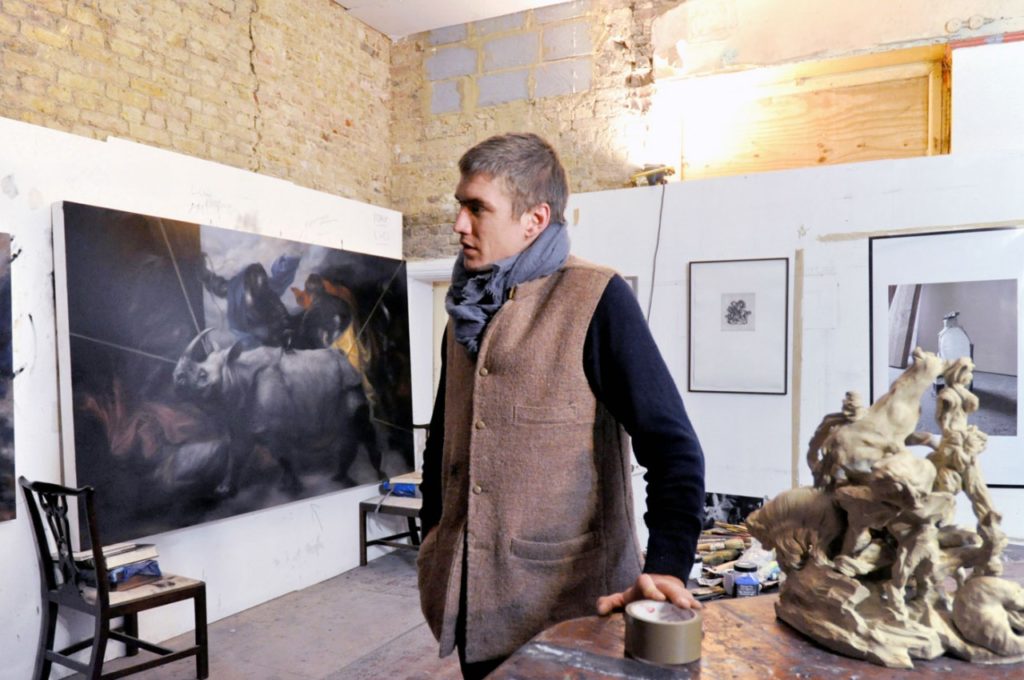
The young British artist explains the key concerns of his current show, "Rape of Europe."

Lorena Muñoz-Alonso

The young British artist Hugo Wilson is currently exhibiting his second solo show at the London gallery Parafin, provocatively titled “Rape of Europe.” Yet, the exhibition is not a straightforward exploration of the contemporary malaise that is currently engulfing both the continent and the UK. Instead, Wilson has taken a plethora of references from art history—including Greco-Roman and Baroque sculpture, and Old Master paintings by the likes of George Stubbs, Peter Paul Rubens, and Nicolas Poussin—and recombined them in configurations that tackle the way culture generates systems of belief and meaning.
artnet News interviewed the London-based artist to explore his enduring interest in animals, his special relationship with painting—despite embracing other media like charcoal drawing and sculpture—and what lies ahead of him in 2017.
Your exhibition is titled “Rape of Europa” which, in these turbulent circumstances, could be seen a quite a provocative title, besides of course referencing the classic myth. Are you addressing the Brexit vote and migrant crisis specifically?
Yes, it was a deliberately provocative title. What I am really interested in with my work is human nature and the need for ideologies. The decision-making behind these things is often based on constructs that were cemented a long time ago and haven’t been questioned since. The reason I used the title “Rape of Europa” was initially to do with one of the parts of the painting that I had appropriated (as I do often in my practice), but as we were discussing titles for the show, it seemed more and more apt.
The idea that the name Europe is based on a myth in the first place echoed a lot of my frustration, and also interest in, the idea that history repeats itself, human nature doesn’t change its simple factors, and that a lot of these constructs—including nationalism—are simply a way of creating a structure and feeling of safety, but actually often to the detriment of that safety.
So, while it was not directly a political thing to do with Brexit, all these issues are always incorporated into what I’m thinking.
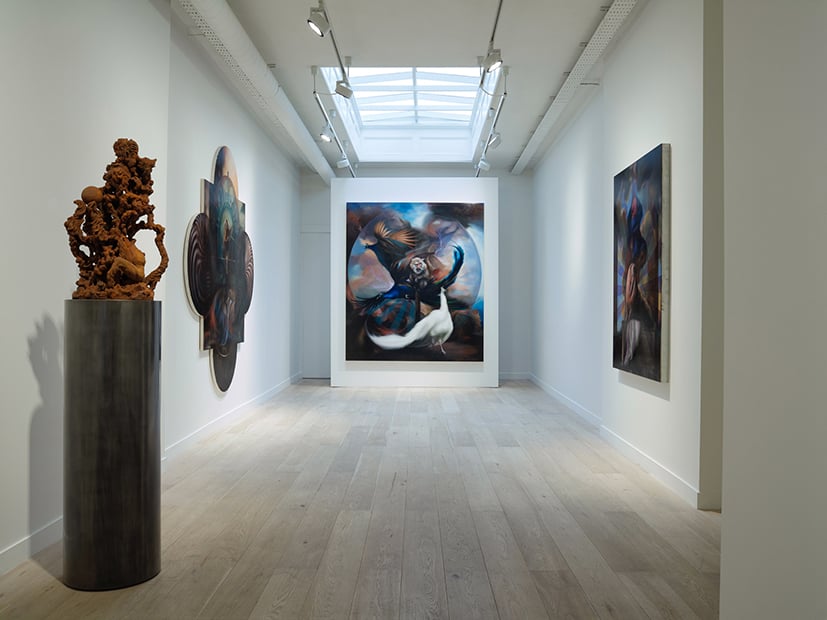
Hugo Wilson, installation view of “Rape of Europa” at Parafin, London. Photo Peter Mallet ©Parafin, London 2016.
Tells us about the works on display in the exhibition, which span painting, charcoal drawings, and sculpture. Is there a medium in which you feel particularly comfortable?
On my MA, I dropped painting altogether, because I felt almost embarrassed to have a classical training. I had a couple of very good tutors, who made it very simple: that medium will follow idea. I think it is dishonest to wake up in the morning and say, “I’m going to make a painting.” The question should be, “Should this be a painting?”
In the case of this show, the changing of medium felt completely natural. Often I’m splicing many contexts into one work. Making a painting actually flattens those layers, and hopefully makes it feel like it could have existed. That is to say, when I am using 15th-century imagery mixed with images that I found on Instagram, I don’t want it to feel like a collage that shows where the images came from, but, in fact, I want to make a new one. The act of painting brings the things together.
There are often really simple reasons for changing medium as well, for example, when I’m using charcoal. (Actually, my charcoals don’t really look like drawings, as they’re not linear at all.) Charcoal is a good medium to use when I want to simply play with form, without any distraction.
Painting is my real love and hate thing, and it makes me more upset than anything else that I do during the day. I often like wandering into mediums that I don’t know much about, so I’ve shown some photography in the past, and I don’t have the same hang-ups about that as I do about painting, so actually I feel happy when I’m doing things that I don’t really know about.
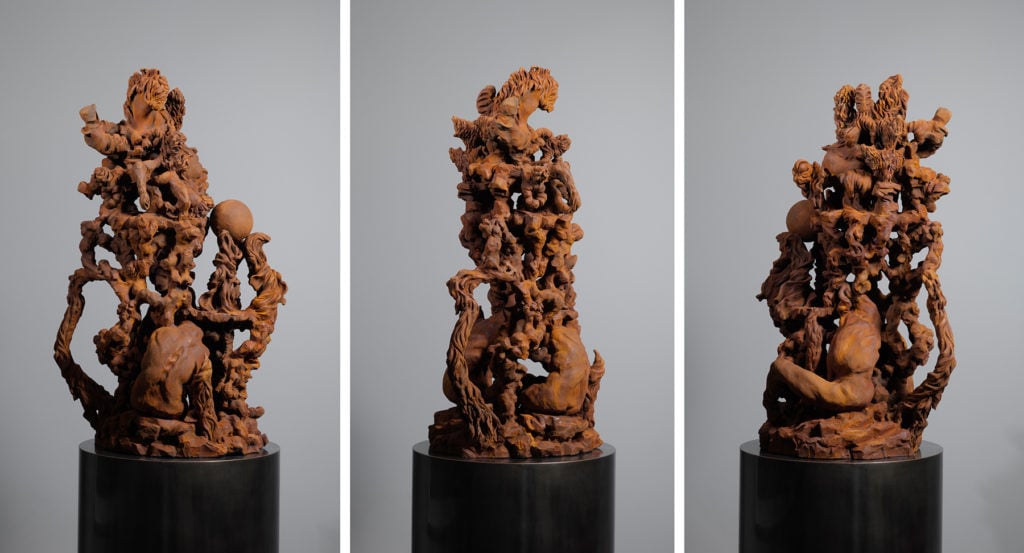
Hugo Wilson, Grotti I (2016) ©Hugo Wilson 2016. Photo Peter Mallet ©Parafin, London 2016.
How important is art history in your work as an artist?
Very, but actually what I’m interested in is the ideologies that allowed those pieces of art to exist. Why pieces of art are created in the first place, and not always what they are.
How does this last series of works relate to your artistic practice at large?
I’m comfortable at the moment in my conceptual framework, and I feel that actually I’ve created a little world in which I can kind of go anywhere, and at least feel comfortable in myself doing it. I think these works are more confident than ones I’ve made in the past, and I’ve begun to really embrace the theatrical nature of making large naturalistic oil paintings.
And actually the Corten steel sculptures are a direct acknowledgement of the Arcadian nature of what I’m up to, except I don’t think Arcadia is vines growing over ruins any more.
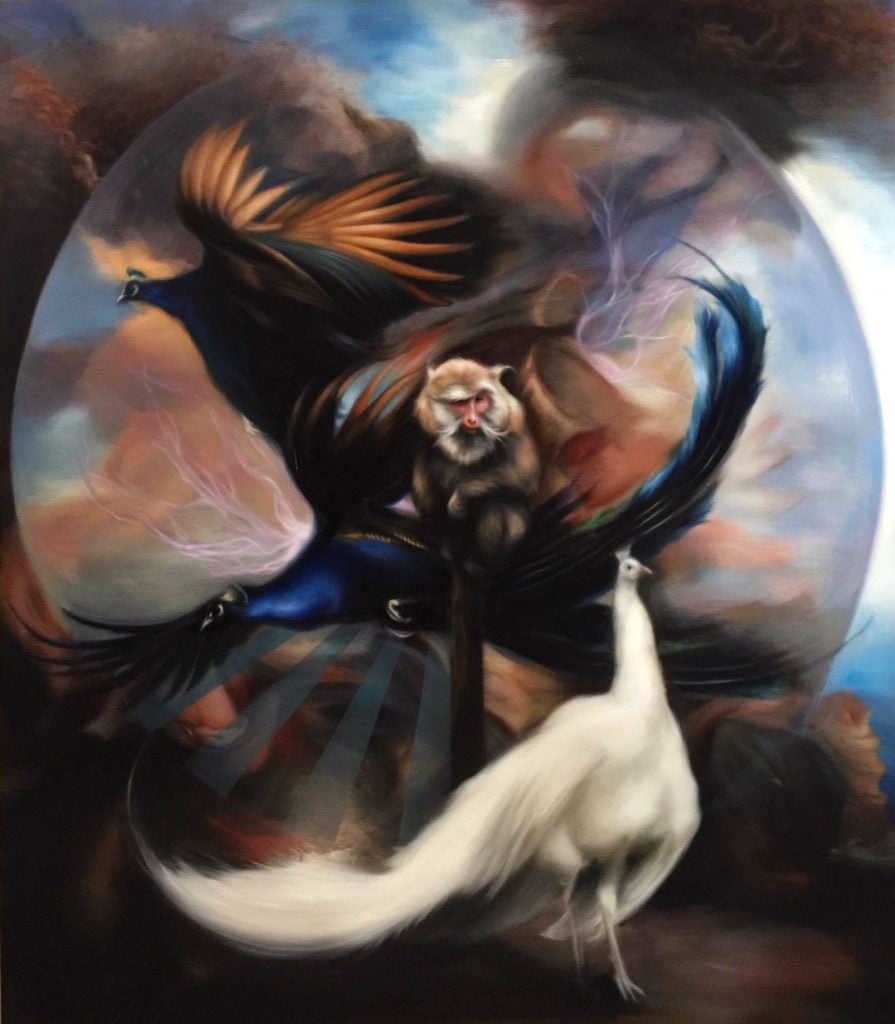
Hugo Wilson, Rape of Europa (2016)© Hugo Wilson 2016. Photo Peter Mallet ©Parafin, London 2016.
Your work has been concerned with animals for quite some time, a theme that seems to be particularly en vogue these days, with thematic exhibitions at Marian Goodman and the Wellcome Collection, and many artists using animals as motifs in their works. Why do you think that is?
I think there will always be works with animals involved, and I suspect because of the reason that I use them, that they are mirrors, and as conscious humans we like to project ourselves onto something. Now, with a lot of my work I’m trying to match a lot of stuff that you may have seen before, but have sort of packed away into a box. So actually, if you’re already projecting yourself onto a monkey and deciding that he is sweet, or angry, or cunning, then you’ve already started the game I want to play.
What’s next for you? Any new projects you are working on at the moment?
I’m just finishing up a show for Berlin Gallery Weekend at Galerie Judin next April, then a few presentations with Parafin, and I’ve been commissioned to make my first large outdoor sculpture, which I’m really excited about.
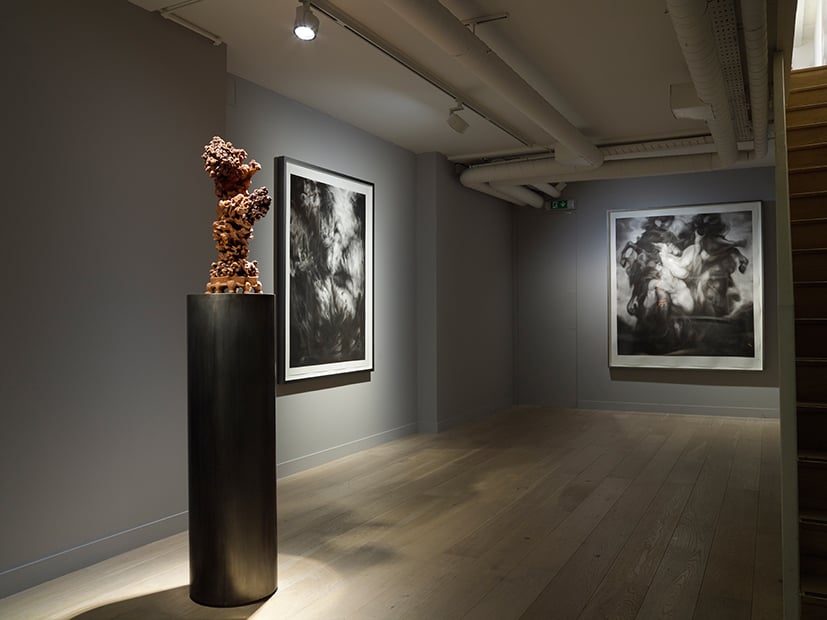
Hugo Wilson, installation view of “Rape of Europa” at Parafin, London. Photo Peter Mallet ©Parafin, London 2016.
Hugo Wilson, “Rape of Europa” is on view at Parafin, London, from November 24, 2016 – January 28, 2017.